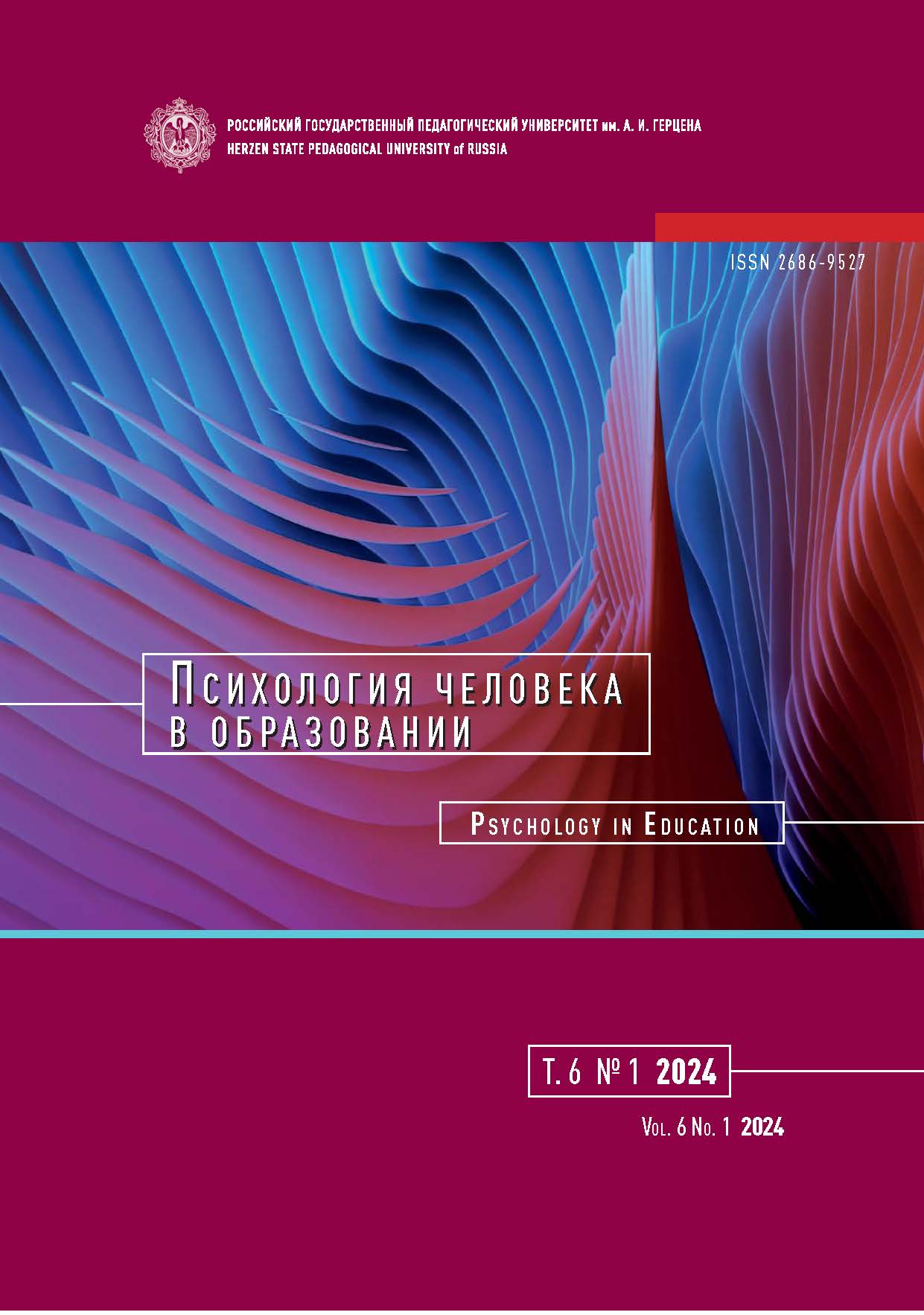Степень выраженности посттравматических стрессовых нарушений у ветеранов Афганской войны
DOI:
https://doi.org/10.33910/2686-9527-2024-6-1-92-99Ключевые слова:
психодиагностические методики, коморбидность, соматические заболевания, посттравматическое стрессовое расстройство (ПТСР), тревога, депрессия, ветераны войныАннотация
Введение. Ветераны Афганской войны спустя десятилетия продолжают страдать отдельными симптомами посттравматического стрессового расстройства (ПТСР), которые осложняют идентификацию и диагностику течения основного соматического заболевания с коморбидными психическими расстройствами. В данном исследовании изучали психоэмоциональное состояние ветеранов войны как последствие перенесенного боевого стресса, сопряженного с ПТСР.
Материалы и методы. Всего в исследовании приняло участие 58 ветеранов Афганской войны. Средний возраст участников составил 57,5 лет. Методология исследования включала использование четырех стандартизированных опросников: Миссисипская шкала ПТСР (военный вариант); шкала депрессии А. Т. Бека; шкала тревожности Спилбергера — Ханина; опросник выраженности психопатологической симптоматики (SCL-90-R).
Результаты исследования. Полученные результаты свидетельствуют о коморбидности психических и соматических заболеваний (32,1 %), а также подтверждают, что постстрессовое расстройство выступает как один из факторов риска развития и прогрессирования соматических (у 87,8 %) заболеваний у ветеранов Афганской войны.
Заключение. В целом полученные результаты подтверждают, что длительные реакции на перенесенный стресс связаны с усилением соматической симптоматики. Также многофакторные стрессовые воздействия продолжают проявляться в виде тревожных и депрессивных расстройств.
Библиографические ссылки
Diagnostic and Statistical Manual of Mental Disorders, Fifth Edition. (2022) American Psychiatric Association 2022. Washington, DC. [Online]. Available at: Diagnostic and Statistical Manual of Mental Disorders, Fifth Edition, Text Revision (DSM-5-TR(tm)) (ifeet.org) (accessed 14.08.2023). (In English)
Beck, A. T., Ward, C. H., Mendelson, M. et al. (1961) An inventory for measuring depression. Arch Gen Psychiatry, vol. 4, no. 6, pp. 561–571. https://doi.org/10.1001/archpsyc.1961.01710120031004 (In English)
Derogatis, L. R., Lipman, R. S., Covi, L. (1973) SCL-90: An outpatient psychiatric rating scale-preliminary report. Psychopharmacology Bulletin, vol. 9, no. 1, pp. 13–28. https://pubmed.ncbi.nlm.nih.gov/4682398. (In English)
Ginzburg, K. (2006) Comorbidity of PTSD and depression following myocardial infarction. Journal of Affective Disorders, vol. 94, no. 1-3, pp. 135–143. https://doi.org/10.1016/j.jad.2006.03.016 (In English)
Gupta, M. A. (2013) Review of somatic symptoms in post-traumatic stress disorder. International Review of Psychiatry, vol. 25, no. 1, pp. 86–99. https://doi.org/10.3109/09540261.2012.736367 (In English)
Hashemian, F., Khoshnood, K., Desai, M. M. et al. (2006) Anxiety, depression, and posttraumatic stress in Iranian survivors of chemical warfare. JAMA, vol. 296, no. 5, pp. 560–566. https://doi.org/10.1001/jama.296.5.560 (In English)
Inoue, C., Shawler, E., Jordan, C. H. et al. (2023) Veteran and military mental health issues. Treasure Island: StatPearls Publ. [Online]. Available at: www.ncbi.nlm.nih.gov/books/NBK572092/ (accessed 14.08.2023). (In English)
Khanin, Yu. L. (1976) Kratkoe rukovodstvo k primeneniyu shkaly reaktivnoj i lichnostnoj trevozhnosti Ch. D. Spilbergera [A brief guide to applying the scale of Reactive Personal Anxiety by C. D. Spielberger]. Leningrad: LNIIFK Publ., 40 p. (In Russian)
Keane, T. M., Caddell, J. M., Taylor, K. L. (1988) Mississippi scale for combat-related Posttraumatic Stress Disorder: Three studies in reliability and validity. Journal of Consulting and Clinical Psychology, vol. 56, no. 1, рр. 85–90. https://doi.org/10.1037//0022-006x.56.1.85 (In English)
Kuntz, L. (2021) Afghanistan veterans struggling with mental Health. Psychiatric Times. [Online]. Available at: https://www.psychiatrictimes.com/view/afghanistan-veterans-struggling-with-mental-health (accessed 14.06.2023). (In English)
McMillan, K. A., Sareen, J., Asmundson, G. J. G. (2014) Social anxiety disorder is associated with PTSD symptom presentation: An exploratory study within a nationally representative sample. Journal of Traumatic Stress, vol. 27, no. 5, pp. 602–609. https://doi.org/10.1002/jts.21952 (In English)
Rytwinski, N. K., Scur, M. D., Feeny, N. C., Youngstrom, E. A. (2013) The co-occurrence of major depressive disorder among individuals with posttraumatic stress disorder: A meta-analysis. Journal of Traumatic Stress, vol. 26, no. 3, pp. 299–309. https://doi.org/10.1002/jts.21814 (In English)
Spielberger, C. D, Jacobs, G. A., Russell, S. F., Crane, R. S. (1983) Assessment of anger: The state-trait anger scale. In: J. N. Butcher, C. D. Spielberger (eds.). Advances in personality assessment. Vol. 2. Hillsdale; New York: Routledge Publ., pp. 159–187. (In English)
Tarabrina, N. V. (2001) Praktikum po psikhologii posttravmaticheskogo stressa [Workshop on the psychology of post-traumatic stress]. Saint Petersburg: Piter Publ., 268 p. (In Russian)
Tarabrina, N. V., Agarkov, V. A., Bykhovets, Yu. V. et al. (2007) Prakticheskoe rukovodstvo po psikhologii posttravmaticheskogo stressa. Ch.1. Teoriya i metody [Practical guide to the psychology of post-traumatic stress. Pt. 1. Theory and methods]. Moscow: Kogito-Tsentr Publ., 208 p. (In Russian)
Thomas, J. L., Wilk, J. E., Riviere, L. A. et al. (2010) Prevalence of mental health problems and functional impairment among active component and National Guard soldiers 3 and 12 months following combat in Iraq. Archives of General Psychiatry, vol. 67, no. 6, pp. 614–623. https://doi.org/10.1001/archgenpsychiatry.2010.54 (In English)
Vasileva, A. V. (2023) Posttravmaticheskoe stressovoe rasstrojstvo — ot travmaticheskogo nevroza k MKB-11: osobennosti diagnostiki i podbora terapii [Post-traumatic stress disorder—from traumatic neurosis to ICD-11: Features of diagnosis and selection of therapy]. Meditsinskiy sovet — Medical Council, no. 3, pp. 94–108. https:// doi.org/10.21518/ms2023-083 (In Russian)
Walter, K. H., Levine, J. A., Highfill-McRoy, R. M. et al. (2018) Prevalence of posttraumatic stress disorder and psychological comorbidities among U.S. active duty service members, 2006–2013. Journal of Traumatic Stress, vol. 31, no. 6, pp. 837–844. https://doi.org/10.1002/jts.22337 (In English)
Zamorski, M. A., Bennett, R. E., Rusu, C. et al. (2016) Prevalence of past-year mental disorders in the Canadian Armed Forces, 2002–2013. The Canadian Journal of Psychiatry, vol. 61, no. 1, pp. 26S–35S. https://doi.org/10.1177/0706743716628854 (In English)
Загрузки
Опубликован
Как цитировать
Выпуск
Раздел
Лицензия
Copyright (c) 2024 Екатерина Владимировна Осадчая, Роза Кабдыгалиевна Татаева

Это произведение доступно по лицензии Creative Commons «Attribution-NonCommercial» («Атрибуция — Некоммерческое использование») 4.0 Всемирная.
Авторы предоставляют материалы на условиях публичной оферты и лицензии CC BY 4.0. Эта лицензия позволяет неограниченному кругу лиц копировать и распространять материал на любом носителе и в любом формате в любых целях, делать ремиксы, видоизменять, и создавать новое, опираясь на этот материал в любых целях, включая коммерческие.
Данная лицензия сохраняет за автором права на статью, но разрешает другим свободно распространять, использовать и адаптировать работу при обязательном условии указания авторства. Пользователи должны предоставить корректную ссылку на оригинальную публикацию в нашем журнале, указать имена авторов и отметить факт внесения изменений (если таковые были).
Авторские права сохраняются за авторами. Лицензия CC BY 4.0 не передает права третьим лицам, а лишь предоставляет пользователям заранее данное разрешение на использование при соблюдении условия атрибуции. Любое использование будет происходить на условиях этой лицензии. Право на номер журнала как составное произведение принадлежит издателю.







